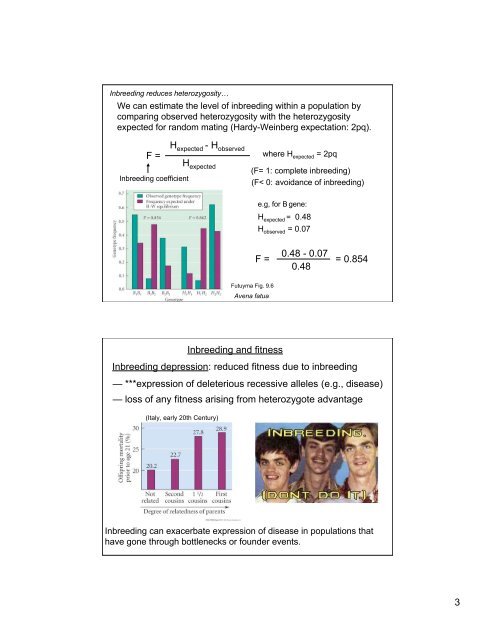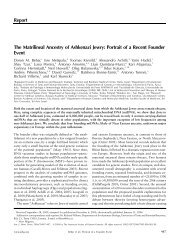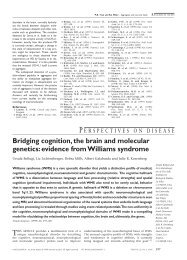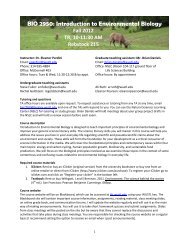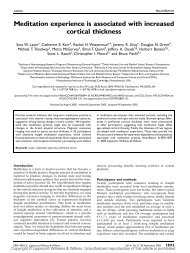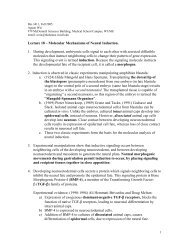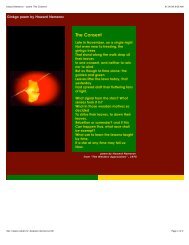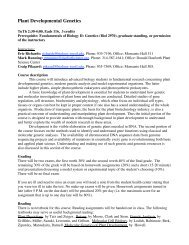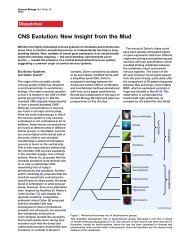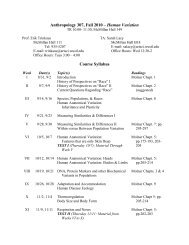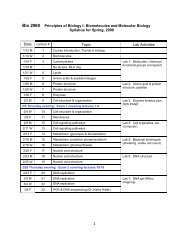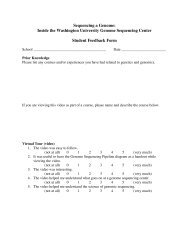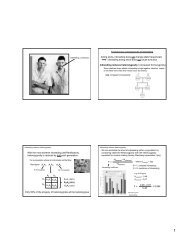increased homozygosity
increased homozygosity
increased homozygosity
Create successful ePaper yourself
Turn your PDF publications into a flip-book with our unique Google optimized e-Paper software.
Inbreeding reduces heterozygosity…<br />
We can estimate the level of inbreeding within a population by<br />
comparing observed heterozygosity with the heterozygosity<br />
expected for random mating (Hardy-Weinberg expectation: 2pq).<br />
F =<br />
Inbreeding coefficient<br />
H expected - H observed<br />
H expected<br />
where H expected = 2pq<br />
(F= 1: complete inbreeding)<br />
(F< 0: avoidance of inbreeding)<br />
e.g, for B gene:<br />
H expected = 0.48<br />
H observed = 0.07<br />
F =<br />
0.48 - 0.07<br />
0.48<br />
= 0.854<br />
Futuyma Fig. 9.6<br />
Avena fatua<br />
Inbreeding and fitness<br />
Inbreeding depression: reduced fitness due to inbreeding<br />
— ***expression of deleterious recessive alleles (e.g., disease)<br />
— loss of any fitness arising from heterozygote advantage<br />
(Italy, early 20th Century)<br />
Inbreeding can exacerbate expression of disease in populations that<br />
have gone through bottlenecks or founder events.<br />
3


